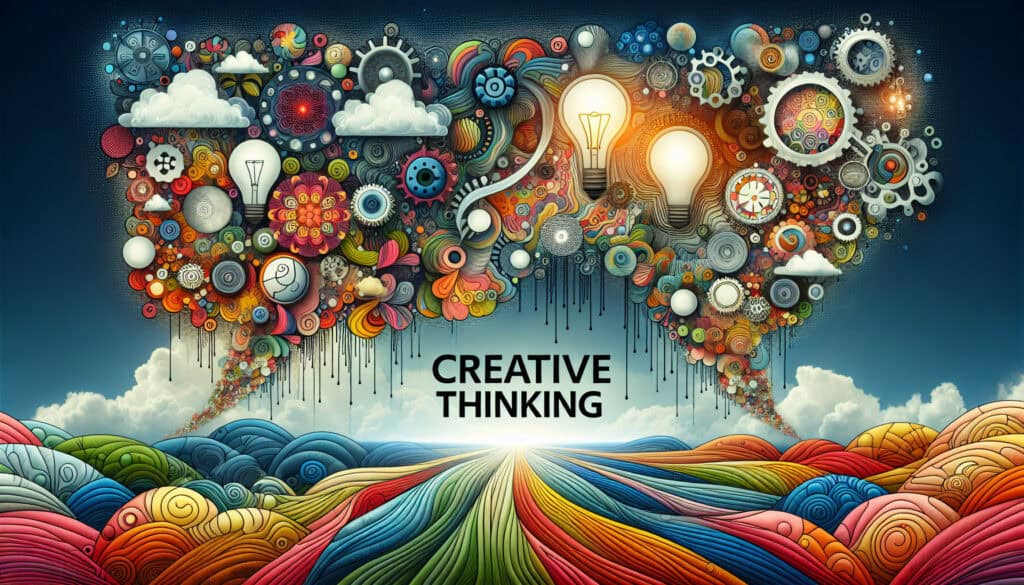The process of generating new, novel, or useful ideas.
- 方法: 客户与营销, 经济学, 产品设计
Creative Thinking

Creative Thinking
- 敏捷方法论, 集思广益, 创造力, 设计思维, 生成设计, 创新, 开放式创新, 解决问题的技巧, 以使用者為中心的設計
目标
如何使用
- It is a way of looking at problems or situations from a fresh perspective that suggests unorthodox solutions. It involves techniques like brainstorming, lateral thinking, and mind mapping.
优点
- Leads to innovation and the development of new products and processes; helps to solve complex problems that have no obvious solution; can create a competitive advantage.
缺点
- Can be unstructured and difficult to manage; success is not guaranteed, and it often involves many failed ideas; it can be difficult to foster in some organizational cultures.
类别
- 构思, 解决问题
最适合:
- Generating novel ideas and solutions, especially for open-ended problems where innovation is required.
Creative Thinking serves as a powerful catalyst for innovation across various domains, including technology, consumer goods, and healthcare, where the design and development of products and solutions require fresh approaches to address unique challenges. Industries like automotive and electronics frequently engage in brainstorming sessions, fostering a culture where teams collaboratively explore unconventional ideas that expand the possibilities for product functionality and user experience. During early project phases such as concept development and ideation, participants from diverse backgrounds, including engineers, designers, and marketing specialists, contribute to the dialogue, leveraging their different viewpoints to formulate robust and varied solutions. Techniques like lateral thinking encourage participants to break away from traditional logical approaches, while mind mapping organizes thoughts and promotes connections between seemingly unrelated ideas, thereby expanding the creative space. Organizations that apply Creative Thinking methodologies often witness substantial increases in innovation speed and efficiency, leading to the rapid development of new features and services that keep pace with market demands and consumer preferences. Companies that prioritize this methodology cultivate environments that empower teams to challenge the status quo, giving them a competitive edge that can translate into market leadership.
该方法的关键步骤
- Identify the problem or challenge that needs addressing.
- Conduct brainstorming sessions to generate a wide range of ideas.
- Utilize lateral thinking techniques to explore unconventional approaches.
- Create mind maps to visually organize thoughts and connections.
- Encourage the combination of ideas to form innovative solutions.
- Select the most promising ideas for further development and prototyping.
- Iterate on the selected ideas through feedback and refinement.
专业提示
- Implement regular "reverse brainstorming" sessions where team members identify ways to achieve the opposite of desired outcomes, uncovering hidden challenges and fostering innovative solutions.
- Encourage cross-disciplinary collaboration to infuse diverse viewpoints; unconventional insights can lead to breakthroughs that are not typically considered within a single field.
- Leverage technology like AI and data analytics tools to simulate scenarios and visualize abstract ideas, pushing the boundaries of traditional brainstorming outcomes.
历史背景
1949
1950
1950
1960
1960
1960
1960
1940
1950
1950
1958
1960
1960
1960
1960
(如果日期不详或不相关,例如 "流体力学",则对其显著出现的时间作了四舍五入的估计)。















相关文章
肌肉骨骼不适调查表
多变量测试(MVT)
多元回归分析
动作捕捉系统
MoSCoW 方法
情绪中值测试